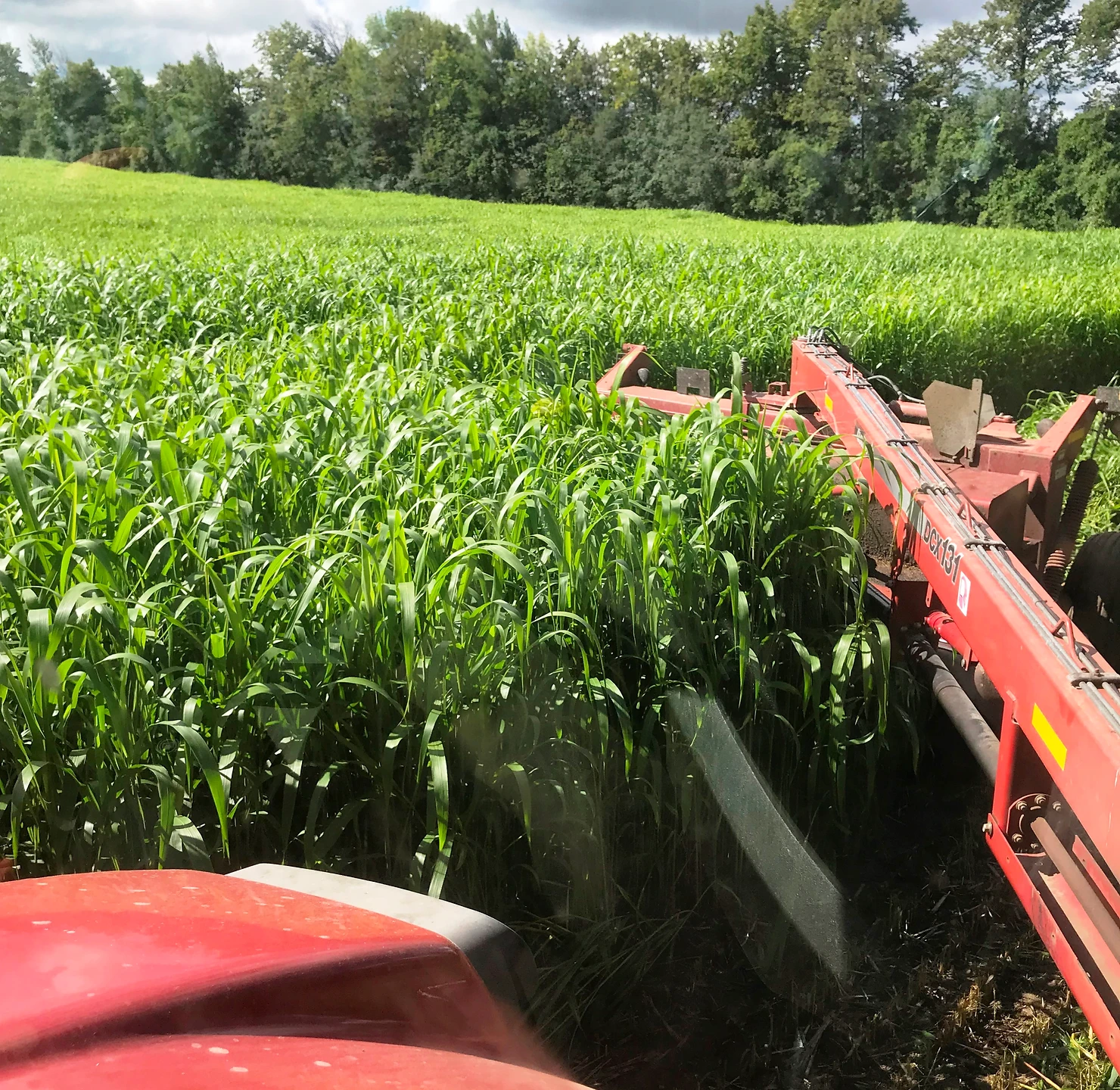The first frosts in the fall present a potential risk from prussic acid (hydrocyanic acid) poisoning with sorghum, sorghum-sudan and sudangrass. There is much greater risk in pasture and green-chop situations than there is when feeding fully fermented forage. Prussic acid decreases significantly during the fermentation process, and also dissipates during moving and feeding.
In general, sorghum is higher risk and sundangrass is much lower risk. Sorghum-sudangrass is intermediate. These species contain varying amounts of cyanogenic glucosides. Young rapidly growing plants have the highest levels. When leaf tissue is ruptured by frost these compounds are converted into prussic acid (cyanide gasses), which is readily absorbed into the blood. High levels of prussic acid are produced within hours after a frost occurs. Because it is a gas it gradually dissipates with drying. High blood levels of prussic acid interfere with respiration and cattle can soon die from respiratory paralysis.
To reduce the risk of prussic acid poisoning:
Pasture
- Do not graze on nights when first frost is likely.
- The safest strategy is to keep livestock off pastures from the first light frost until the plants are completely dead and dry after a killing frost (usually 6–7 days).
- Growth from new shoots following even a light frost can be high risk when pastured. If new shoots develop, harvest the field as haylage or baleage rather than pasture.
Haylage & Baleage
- Harvest the last cutting before frost occurs.
- Do not harvest for 5-7 days after a frost
- Haylage & baleage should be fully fermented before feeding (6-8 weeks).
For more information, refer to “Prussic Acid Poisoning Potential in Frosted Forages”
https://crops.extension.iastate.edu/cropnews/2011/09/prussic-acid-poisoning-potential-frosted-forages
